Plumeria Pest Problems – Learn About Pest Control For Plumerias
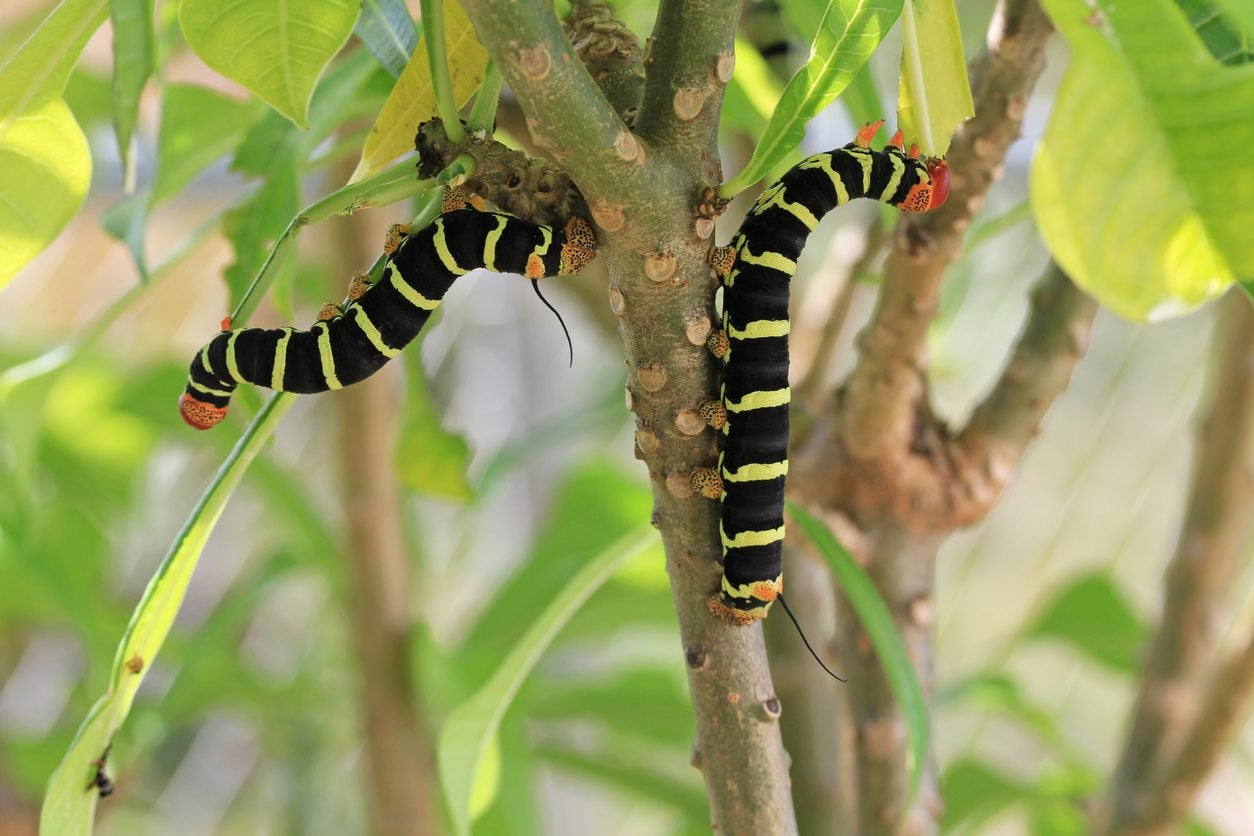
As with many plants, we first notice a problem with plumeria when leaves start to turn yellow, then brown and drop off. Or we are delightedly waiting for buds to burst into color, but the buds never open or drop off. Assuming the plumeria has the correct environmental conditions such as sufficient light, appropriate water, and fertilizing schedule, examine the plant for pests.
Common Plumeria Pests
Plumerias are subject to many of the same pests as any other garden plants. The most common of which include:
In addition to the pest above, there is one more commonly found insect that affects this plant-- the caterpillar of the Tetrio sphinx moth. Plumeria just so happens to be its primary host plant.
Identifying Plumeria Pest Problems
Examine the leaves on top and bottom, looking for any pest problems. Spider mites, a sucking insect, are smaller than a pin head but can be identified by webs between the leaf ribs. To check for whiteflies, shake the plant stems and leaves. If small insects fly out, you likely have a whitefly infestation. Now examine the leaves and stems for white, fluffy, sticky clumps, especially where the stems attach to the plants and along the edges of the leaf ribs. With a magnifying glass, you can see these are mealybugs. If you found brown, raised bumps along the stems and leaf ribs, you are dealing with scale. Thrips generally reside inside the buds of plants. They are difficult to see until you pick off a bud and set it on a plate. Soon, you will see small, black bugs that look like a rye seed crawling out of the flower bud. In some areas, slugs and snails are plumeria plant pests. Portions of the plant stem will have been chewed away and slime trails may be visible near the plants. Damage from caterpillars will come in the form of chewed leaves and defoliation of the plant.
Treating Plumeria Insect Pests
The first, easiest, and least expensive pest control for plumerias is to spray the plants with a strong jet of water. This creates a moist environment to discourage spider mites which prefer dry, dusty conditions. The spray dislodges whiteflies and kills them by drowning them or breaking off their mouth parts, so they die. If a jet of water fails, spray the plants with insecticidal soap to suffocate the insects. Water does not impact scale and mealybugs. Both of these plumeria plant pests create a waxy protective shell preventing pesticides from penetrating. For these common plumeria pests, treat them with cotton swabs dipped in rubbing alcohol. Dab each bump or white sticky patch with rubbing alcohol to kill the insect under its protective shell. Diatomaceous earth is a good choice for treating plumeria pest problems such as slugs and snails. Spread it on the ground around the plant. For the most part, the caterpillar pests can be picked off by hand and tossed into a bucket of soapy water. Of course, if you’re a bit on the squeamish side, this probably isn’t something you want to do. Should this be the case, you’ll be happy to know that most caterpillars can be controlled with the use of Bacillus thuringiensis. If the above methods do not eliminate your plumeria plant pests, you may need to resort to systemic insecticides, recommended by your local garden center.
Gardening tips, videos, info and more delivered right to your inbox!
Sign up for the Gardening Know How newsletter today and receive a free copy of our e-book "How to Grow Delicious Tomatoes".
-
 Types Of Tomatoes Explained: Explore The Many Wonderful Shapes, Colors, Flavors, & Best Uses
Types Of Tomatoes Explained: Explore The Many Wonderful Shapes, Colors, Flavors, & Best UsesThe world of tomato varieties is vast and fascinating. Learn about the key types to grow in your garden, tailored to your preferences and space.
By Amy Grant
-
 Try The Trend – Turn Any Bed Into A Keyhole Garden With This Clever In-Ground Composter
Try The Trend – Turn Any Bed Into A Keyhole Garden With This Clever In-Ground ComposterKeyhole gardening is an efficient and sustainable practice that saves space. Get started on this DIY project quickly and easily with an in-ground composter.
By Bonnie L. Grant
-
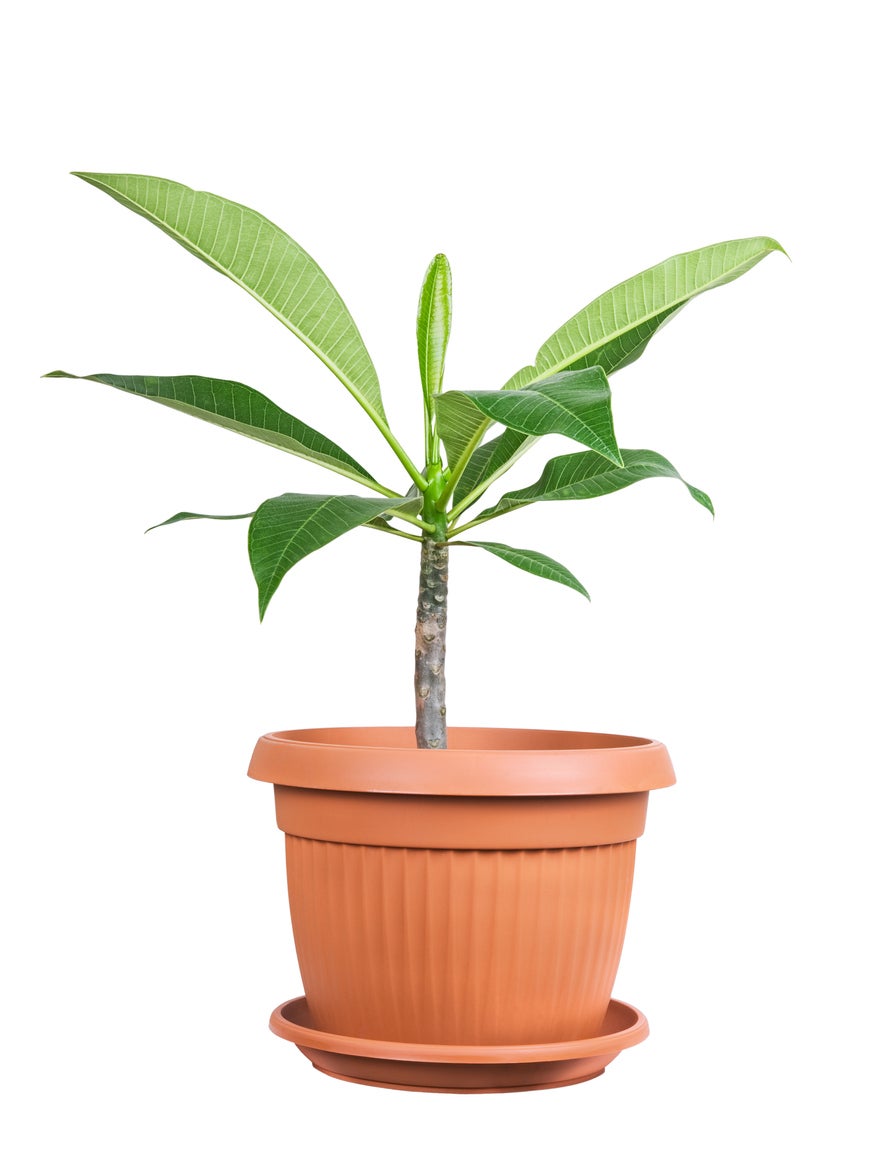 Plumeria Repotting Guide – Tips On When To Repot Plumerias
Plumeria Repotting Guide – Tips On When To Repot PlumeriasGrowing plumeria in a container requires repotting a plumeria yearly, in most cases. This encourages optimum growth and beauty. Plumeria repotting is not complicated, requiring a gentle touch and clean pruners. Take a look at the specifics in this article.
By Becca Badgett
-
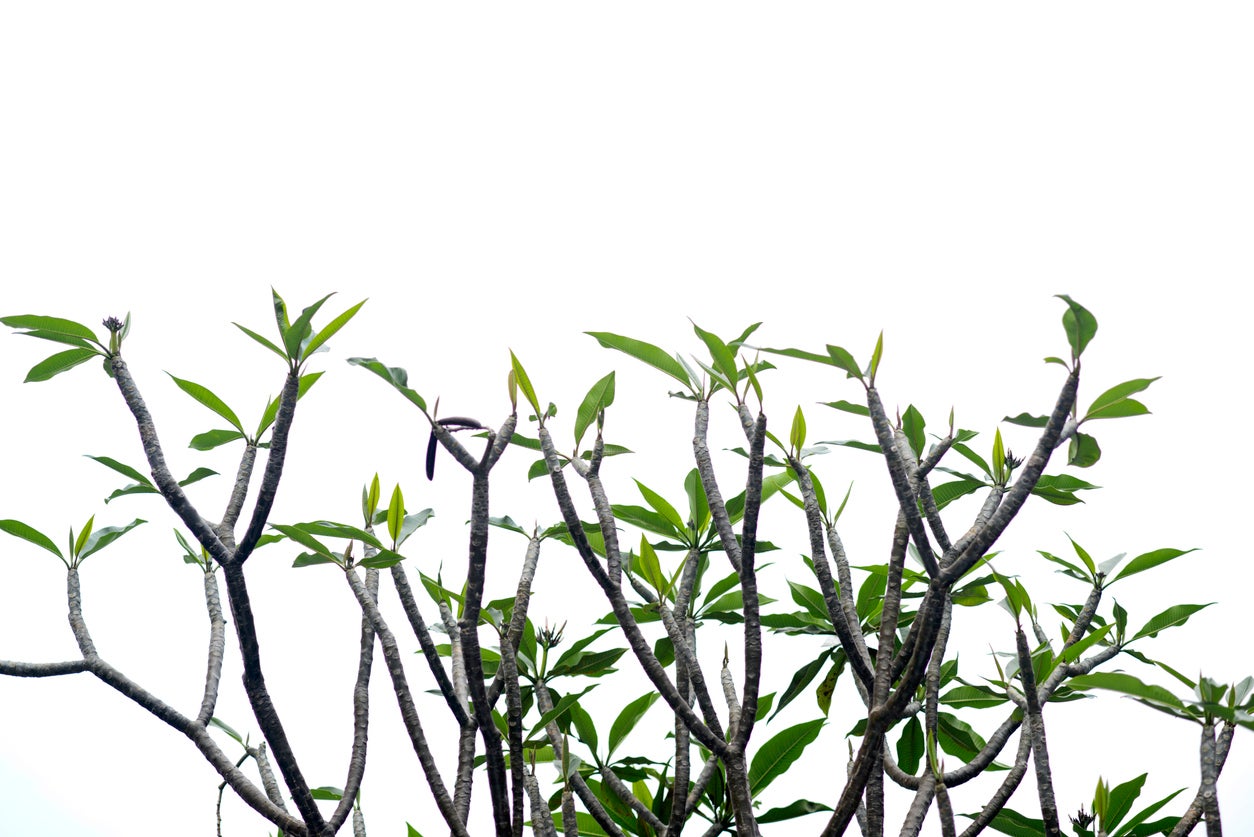 Making A Plumeria Branch: How To Encourage Plumeria Branching
Making A Plumeria Branch: How To Encourage Plumeria BranchingAlthough plumerias are surprisingly easy to grow, they can become lopsided or spindly. If your goal is to encourage plumeria branching, thus creating a fuller, balanced plant with more blooms, pruning is the way to go. Learn how to get plumeria to branch in this article.
By Mary H. Dyer
-
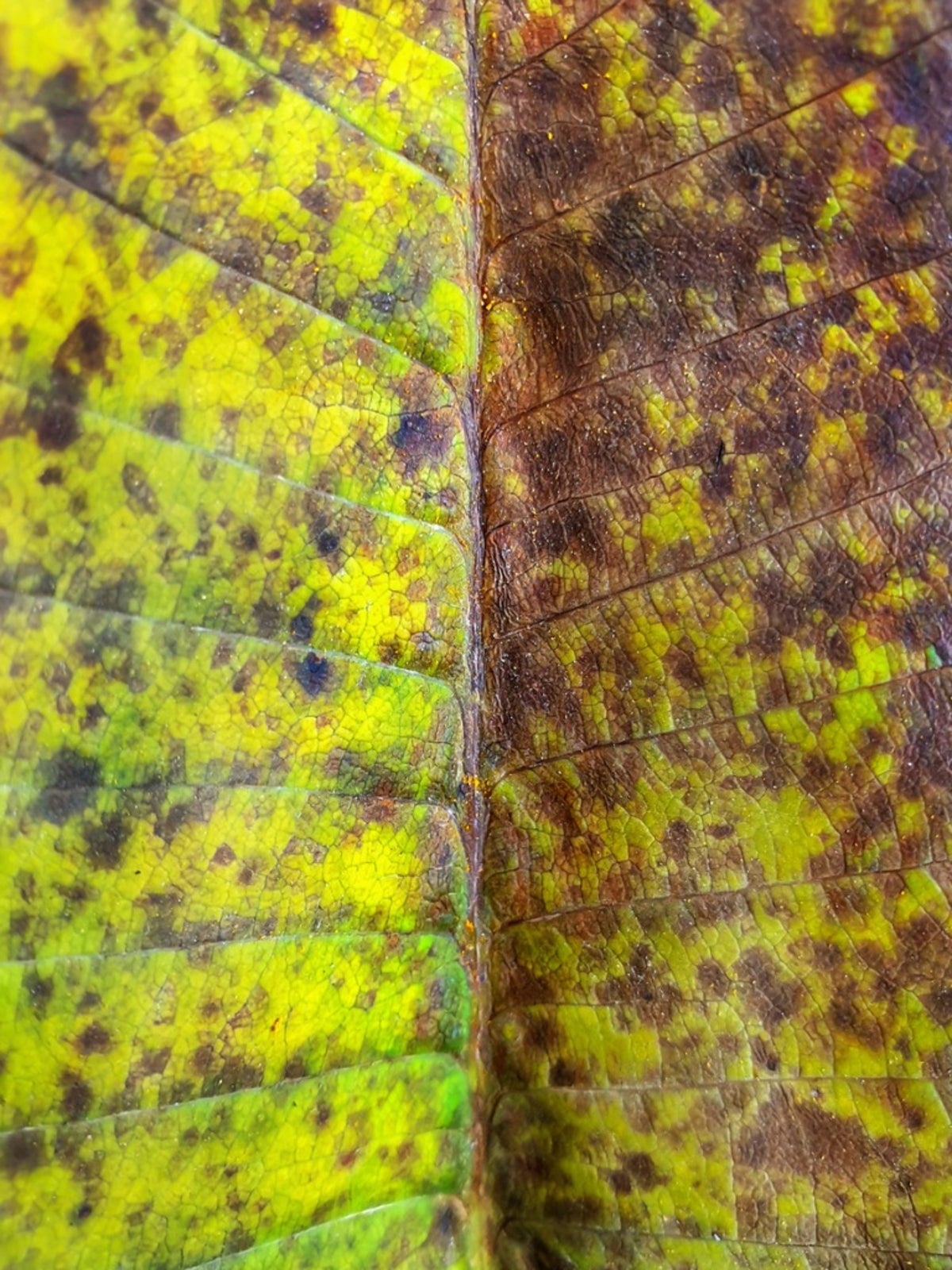 Plumeria Rust Fungus: How To Treat Plumeria Plants With Rust Fungus
Plumeria Rust Fungus: How To Treat Plumeria Plants With Rust FungusAlthough fungal diseases can happen anywhere, warm, humid tropical regions are especially favorable for fungal growth. Plumeria rust fungus is a disease that is specific to plumeria. Learn more about rust on plumeria plants in this article.
By Darcy Larum
-
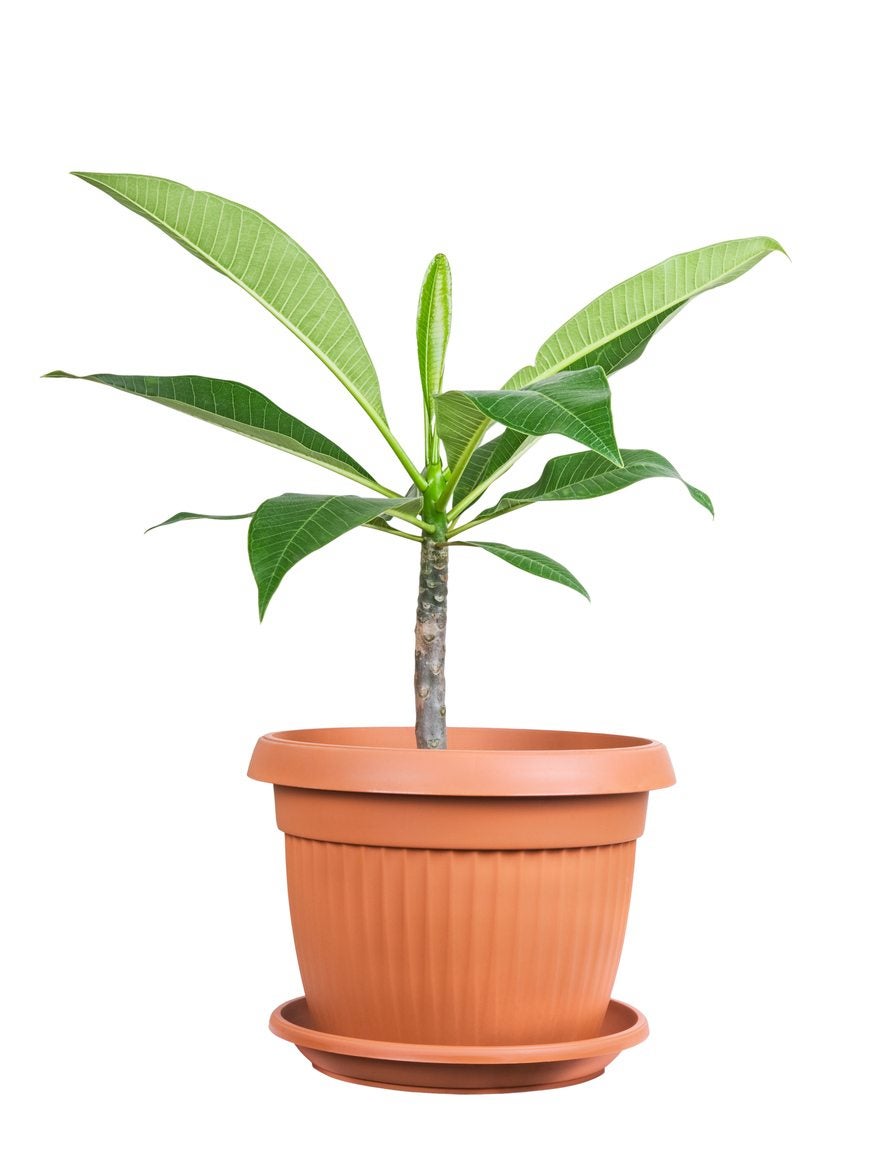 Indoor Plumeria Care – How To Grow Plumeria Plants Indoors
Indoor Plumeria Care – How To Grow Plumeria Plants IndoorsYou want to grow plumeria at home but feel geographically disadvantaged because you don?t live in the right planting zone (zone 9-11). But can you grow plumeria inside? What is required for indoor plumeria care? Click this article on to learn more.
By Shelley Pierce
-
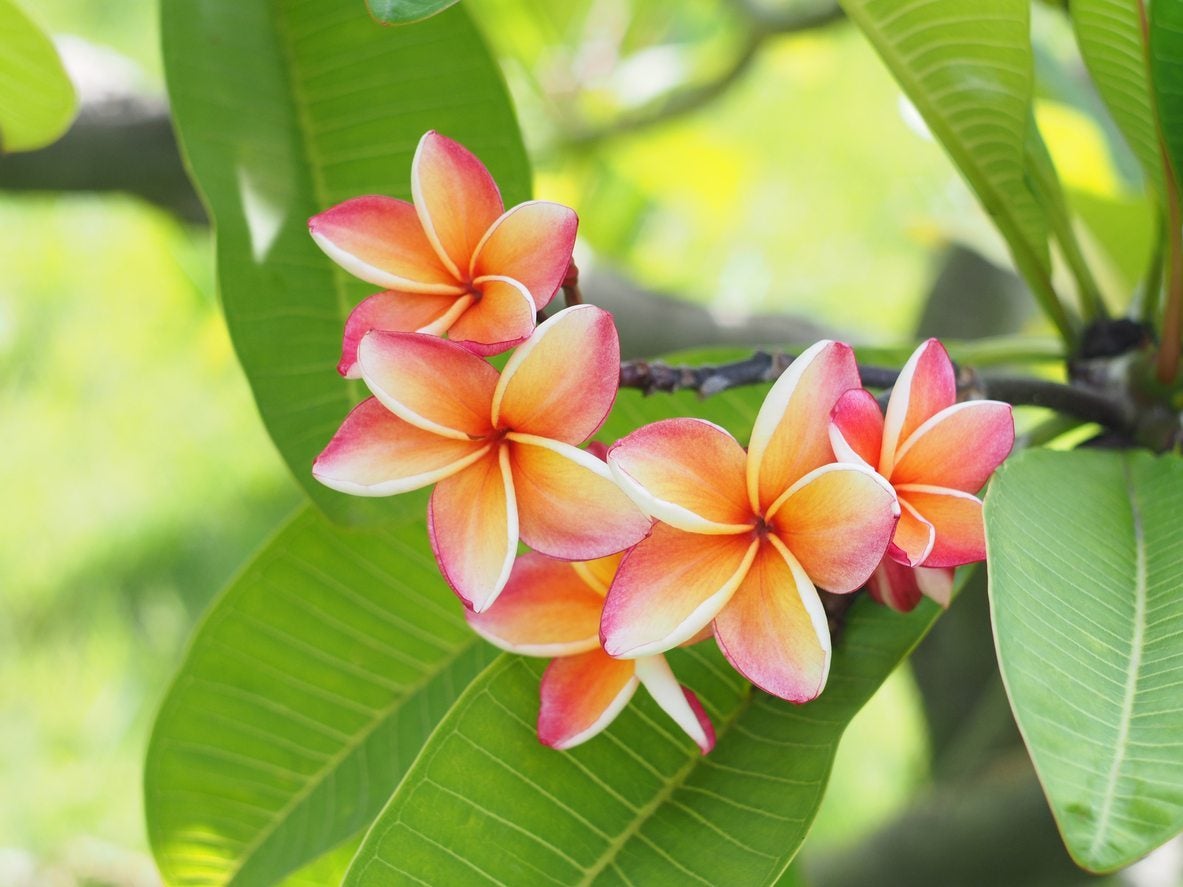 Moving Plumeria Plants : How And When To Move A Plumeria
Moving Plumeria Plants : How And When To Move A PlumeriaPlumeria can develop into large bushes with extensive root systems. Transplanting mature plants may be difficult, but transplanting a plumeria cutting is easy. Knowing when to move a plumeria is also an important aspect. This article will help with that.
By Bonnie L. Grant
-
 Plumeria Cutting Propagation – How To Grow Plumeria Cuttings
Plumeria Cutting Propagation – How To Grow Plumeria CuttingsPlumeria is a tropical and subtropical flowering plant that's very popular for its fragrance and for its use in making leis. Plumeria can be grown from seed, but it can also be propagated extremely well from cuttings. This article can help with that.
By Liz Baessler
-
 Plumeria Bud Drop: Why Are Plumeria Flowers Dropping
Plumeria Bud Drop: Why Are Plumeria Flowers DroppingIt can be upsetting to see plumeria flowers falling off or buds dropping before they open. This article provides information about plumeria flower drop and other problems with plumeria. Click here to find out why flower drop occurs and how to fix them.
By Teo Spengler
-
 Seed Pods On Plumeria – When And How To Harvest Plumeria Seeds
Seed Pods On Plumeria – When And How To Harvest Plumeria SeedsSome plumeria are sterile but other varieties will produce seed pods that look similar to green beans. These seed pods will split open, dispersing 20-100 seeds. Click here to learn about harvesting plumeria seed pods to grow new plants.
By Darcy Larum